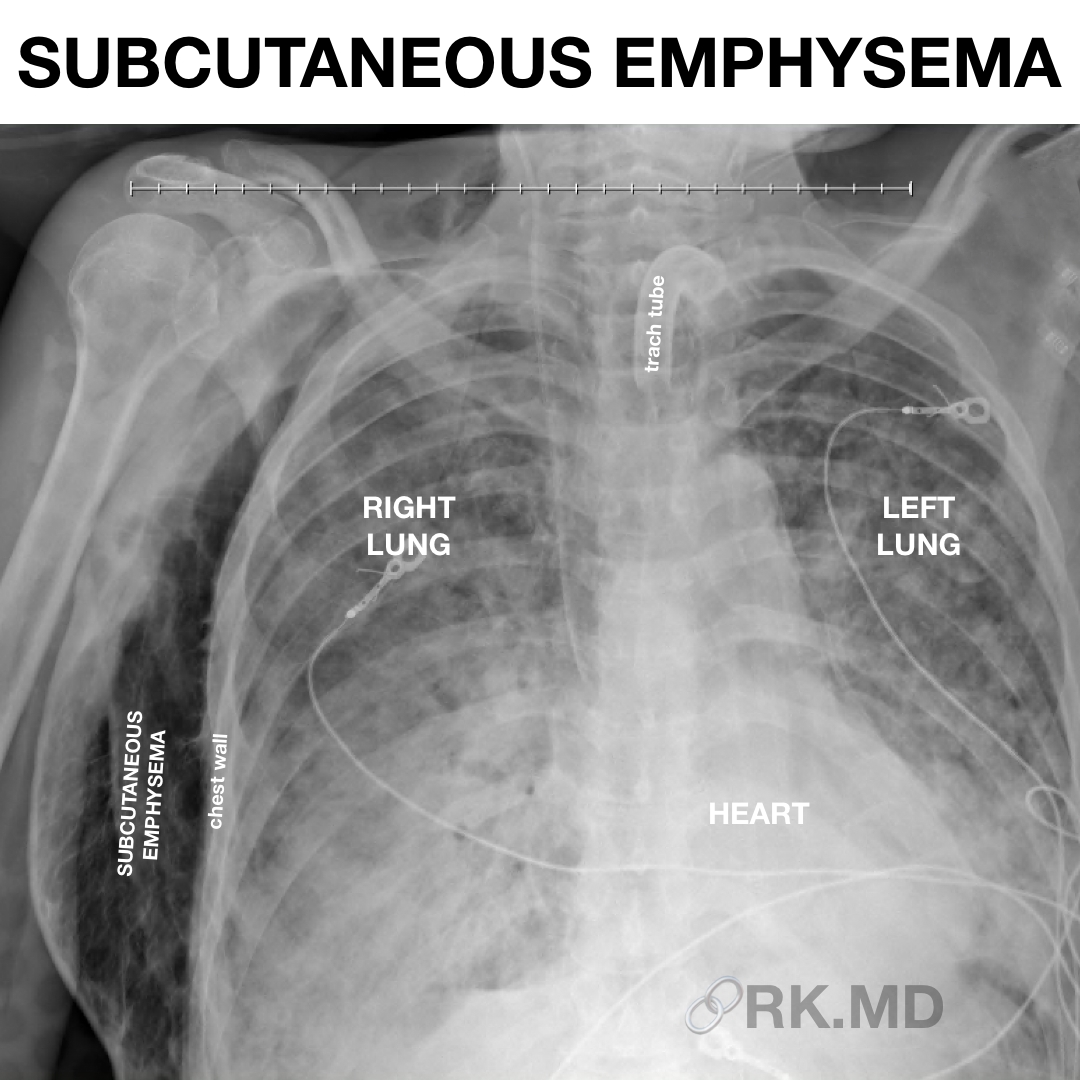Subcutaneous emphysema occurs when air gets trapped within the subcutaneous regions of the face, neck, chest wall, abdomen, and even down to the thighs/legs. The characteristic physical exam finding of crepitus (“snap-crackle-pop”) is caused by air traversing tissue planes during palpation.
I routinely palpate across the chest wall of my patients on prolonged mechanical ventilation looking for early clues of subcutaneous emphysema. Furthermore, radiographs (like the pictured chest x-ray) can show up as radiolucency throughout the underlying tissue. In this case, the tissue outside of the confines of the right chest wall shows a significant amount of subcutaneous emphysema.
Treatment is centered around decreasing the pressure within this compartment. Typically, this means limiting barotrauma caused by mechanical ventilation. If compartment syndrome becomes a real concern, sterile “blowhole incisions” can be created through the dermis to allow decompression of the subcutaneous space.
Drop me a comment below with questions!






